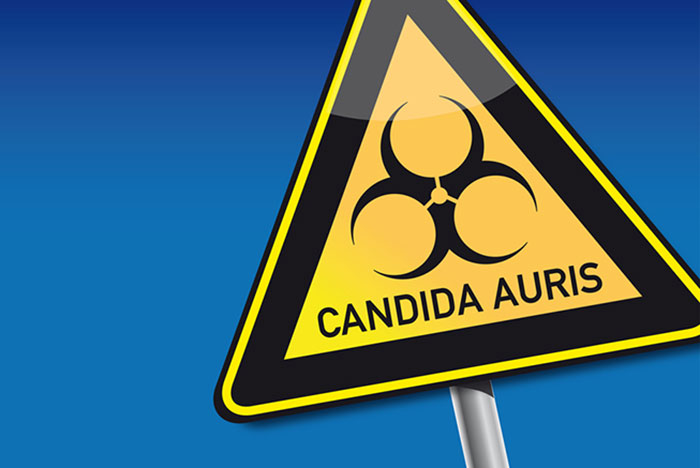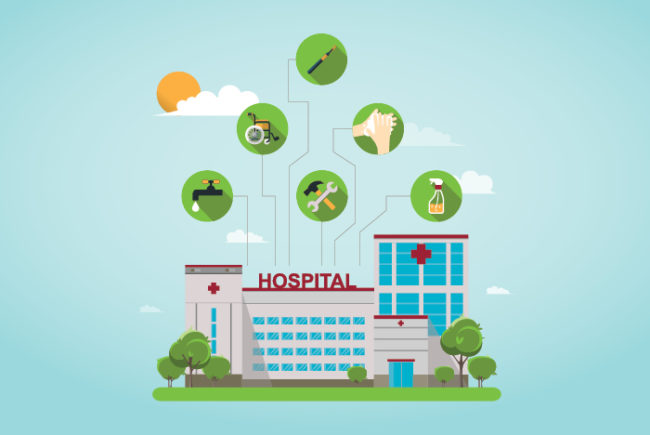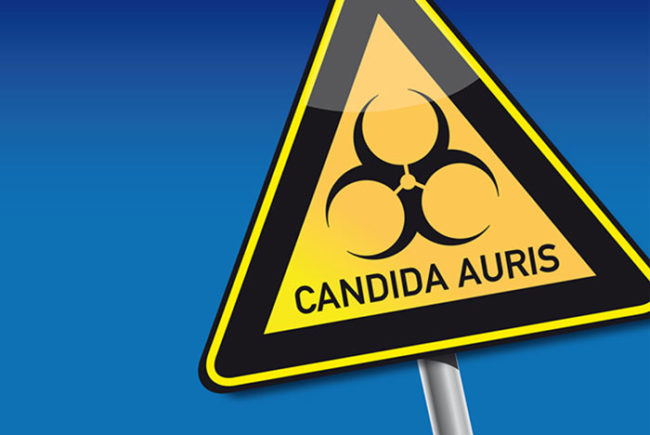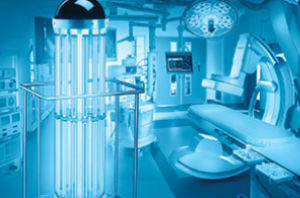
ES professionals must take many threats into consideration when they develop disinfection programs.
Today’s health care facilities need environmental infection control strategies that can address a range of threats, from the most common health care-associated infection (HAI)-causing pathogens like Clostridium difficile to emerging antibiotic-resistant bacteria and viral pathogens.
In late February 2017, the World Health Organization (WHO) published its first-ever priority pathogens list, a catalog of 12 families of antibiotic-resistant bacteria that pose the greatest threat to human health.
Environmental services (ES) professionals must take this list as well as other unlisted threats under consideration as they develop a cleaning and disinfection program for their organizations.
The WHO list is broken up into three categories:
Critical priorities: carbapenem-resistant Acinetobacter baumannii; carbapenem-resistant Pseudomonas aeruginosa; and carbapenem-resistant, extended-spectrum beta lactamase-producing Enterobacteriaceae.
High priorities: vancomycin-resistant Enterococcus faecium; methicillin-resistant, vancomycin-intermediate and resistant Staphylococcus aureus; clarithromycin-resistant Helicobacter pylori; fluoroquinolone-resistant Campylobacter spp.; fluoroquinolone-resistant Salmonella; and cephalosporin-resistant and fluoroquinolone-resistant Neisseria gonorrhoeae.
Medium priorities: penicillin-non-susceptible Streptococcus pneumoniae; ampicillin-resistant Haemophilus influenzae; and fluoroquinolone-resistant Shigella spp.
While the WHO’s list of priority pathogens was welcomed by many leading health care organizations and experts in infectious diseases, epidemiology, biodefense and public health, who have endorsed its goals, there is not perfect agreement on which pathogens warrant a spot on the list and how they are prioritized.
You may also like |
| ES managers face succession planning challenges |
| Researchers explore ways to improve patient room cleaning |
| Improving ES customer service |
|
|
Take, for example, the Infectious Diseases Society of America (IDSA). The WHO list included three carbapenem-resistant pathogens — A. baumannii, P. aeruginosa and Enterobacteriaceae — that the IDSA had recommended as the highest priorities, as “critical,” but left off others.
In an October 2016 letter to the director general of the WHO, the IDSA maintained that other ESKAPE (E. faecium, S. aureus, Klebsiella pneumoniae, A. baumannii, P. aeruginosa and Enterobacter species) pathogens, which continue to pose serious threats globally, as well as bacteria that carry mcr-1 or mcr-2 genes and convey colistin resistance, also should be considered among the highest priorities.
The IDSA also argued that multidrug
-resistant tuberculosis remains a significant global threat, but it was left off the WHO’s list because the organization determined that it is targeted by other dedicated programs.
The WHO’s priority pathogen list is also not the only major initiative in recent years urging world leaders to address antimicrobial resistance and call for greater public and private-sector engagement to combat this urgent threat.
In 2013, the Centers for Disease Control and Prevention (CDC) published a report outlining the top 18 drug-resistant threats to the United States, with each pathogen categorized based on level of concern, from urgent to serious and concerning.
The European Centre for Disease Prevention and Control and Asian Network for Surveillance of Resistant Pathogens also have undertaken antibiotic-resistance threat assessments.
Dynamic response required
While the findings of these reports may vary, one thing is clear: Antibiotic resistance is a challenge that requires a dynamic response to account for both familiar and evolving threats. As the U.S. continues to build on existing and ongoing efforts to combat antibiotic resistance, it is useful to consider the three core areas the CDC has identified as priorities for strategic investment to protect patients:
Detection and response. The ability to identify and respond quickly to outbreaks and emerging threats, from HAIs to growing antibiotic resistance, is crucial to containing these threats and controlling their spread. Improved surveillance and data collection are also important as a means to more accurately analyze the burden and regional and global impact of antibiotic-resistant pathogens.
Infection prevention. Improving the prevention of HAIs is an important step in protecting Americans from the growing threat posed by antibiotic resistance. One of the key areas the CDC is targeting for strategic investment is the development of coordinated networks at the state and regional levels designed to empower health care facilities, public health agencies and the communities they serve to work together to prevent infections and protect patients.
Improving antibiotic use. Improving antibiotic use is critical to combating further antibiotic resistance and preserving existing treatments used for life-threatening infections. According to the CDC, key areas for improvement include antibiotic stewardship and sepsis recognition and prevention in doctors’ offices, hospitals and nursing homes.
It’s important to note that the actions outlined as part of the CDC’s Antibiotic Resistance Solutions Initiative don’t exist in a vacuum. They are intended to work in concert with the efforts of other national and international stakeholders as well as public- and private-sector initiatives to incentivize the research and development of new drugs, diagnostic tools and vaccines, while also advancing multidisciplinary efforts to promote health and safety.
It is part of what public health leaders call a “One Health” approach that recognizes the connection among human health and the health of animals and the environment on a global level. The goal is to “encourage the collaborative efforts of multiple disciplines — working locally, nationally and globally — to achieve the best health for people, animals and our environment.”
What does all this mean for health care facilities? Are today’s doctors’ offices, hospitals and long-term care facilities expected to provide safe, high-quality care for patients and meet the myriad financial, workforce and regulatory challenges of the constantly changing health care landscape while also acting as global stewards of human, animal and environmental health?
Urgent challenges like antibiotic resistance force health care organizations to look at things differently and recognize that the threats are complicated. To address a range of interconnected issues appropriately, it is important to see the bigger picture but not be paralyzed by the enormity of it. Rather, by understanding the need for a collaborative, multipronged approach, a path forward can be mapped out.
There are even a few areas where hospitals already may have the tools they need to make an impact. Environmental hygiene is a well-established daily practice in health care settings throughout the country and it plays an important role in preventing both HAIs and the spread of antibiotic resistance.
Infections and resistance
There is an important connection among HAIs, antibiotic use and the spread of antibiotic resistance. Studies suggest that more than half of hospitalized patients in U.S. acute care facilities receive antibiotics on any given day and about one in 25 of those patients have one or more HAIs. Further, HAIs are commonly caused by antibiotic-resistant bacteria, which can make infections difficult and sometimes even impossible to treat, especially because extensive resistance is frequently encountered in health care facilities.
HAIs can be spread to patients through direct contact with an infected or colonized person; e.g., contact with a health care staffer’s contaminated hands or via contaminated medical equipment or environmental surfaces like door knobs, tables and handrails.
While antibiotic stewardship programs play an important role in optimizing the treatment of infections and reducing adverse events and bacterial resistance associated with inappropriate antibiotic use, they are not the only tool at health care facilities’ disposal. Preventing infections from occurring in the first place reduces the amount of antibiotics needed and the likelihood that resistance will develop during therapy. It also prevents the spread of resistant pathogens within and between health care facilities.
This is a serious consideration for a range of threats, from deadly hospital pathogens like C. difficile, to emerging viral pathogens. C. difficile spores can survive on hard surfaces for months and are transmitted easily between patients, often through transient contamination of a health care worker’s hands. Scientific evidence also has shown that viruses, including severe acute respiratory syndrome-associated coronavirus (SARS-CoV), Middle East respiratory syndrome-associated coronavirus (MERS-CoV), and certain strains of the influenza virus can survive on surfaces for extended periods — sometimes up to months — and may play a role in transmission.
Cleaning and disinfecting environmental surfaces in health care facilities is foundational to responsible facility maintenance and management and the ability to provide safe, high-quality patient care. It also is a key action to help reduce the risk of infection. According to the CDC, preventing HAIs provides immediate benefit in reducing the impact of antibiotic resistance, which may lead to sepsis or death.
Environmental hygiene
Compliant cleaning and disinfection of environmental surfaces and medical equipment is an important first line of defense to prevent the spread of HAI-causing pathogens, including antibiotic-resistant organisms like methicillin-resistant S. aureus, carbapenem-resistant Enterobacteriaceae, pathogens associated with antibiotic usage like C. difficile, and other infectious agents in the health care environment. Reducing environmental reservoirs of infectious pathogens can help to interrupt the chain of transmission and reduce the risk of infection.
Surface disinfectants often have multiple, nonspecific target sites across different classes of microorganisms. For example, oxidative active ingredients like sodium hypochlorite and hydrogen peroxide quickly and indiscriminately react with proteins, nucleic acids and other biomolecules, leading to oxidative cell destruction. This makes it challenging for pathogens to develop mechanisms to survive exposure to surface disinfectants with these active ingredients.
In an increasingly global and interconnected society, emerging and re-emerging infectious diseases present serious challenges for ES professionals. This is especially true of viral pathogens with high potential for hospital-associated transmission, such as SARS-CoV and MERS-CoV, which caused large hospital outbreaks in Saudi Arabia and South Korea.
To help safeguard patient environments against emerging and re-emerging threats, ES professionals should look for products with broad-spectrum disinfection efficacy against a wide range of pathogens including bacteria, enveloped and non-enveloped viruses, fungi and
C. difficile spores. They also should carry relevant Environmental Protection Agency (EPA)-registered kill claims.
If no products carry kill claims for a pathogen of concern in a facility, ES professionals should look to the CDC and the EPA for guidance until the claims become available on the product.
In addition to selecting appropriate products, compliance with cleaning and disinfecting protocols also needs to be reinforced. Even the best products and protocols alone can’t adequately address environmental contamination and help to stop the spread of infections if they are not implemented or followed correctly.
Unfortunately, cleaning and disinfection practice is often suboptimal, with studies showing that health care workers are cleaning and disinfecting only about 30 to 50 percent of the surfaces that they should be. These include toilet handholds, light switches, doorknobs, bedside rails, nurse call buttons and patient telephones.
Ongoing education, training and monitoring is important to ensure compliance, but pragmatic product selection also can help because products are more likely to be used correctly when they are easy to use and well-tolerated. ES professionals have a wide range of options for surface disinfectants, so it should be easy to find options with broad antimicrobial efficacy, that also are easy to use and have acceptable aesthetics.
Responding to challenges
As ES professionals respond to the challenges presented by both common HAI-causing pathogens and emerging infectious disease risks, including the further development of antibiotic resistance, many are re-evaluating their infection prevention strategies and placing greater emphasis on antibiotic stewardship, detection and response activities and improving collaboration with other health care providers, public health organizations, manufacturers, private-sector stakeholders and patients.
Building capabilities in each area is critical to safeguarding public health, but it is important to keep in mind the basic infection prevention and control activities like environmental cleaning and disinfection that protected people for generations, especially prior to the advent of antibiotics.
In health care facilities, simple pragmatic interventions like expanding the use of sporicidal disinfectants, which offer broad-spectrum efficacy for a more comprehensive approach to environmental infection control, can potentially make a big difference.
Lori Strazdas, MPH, is a public health liaison at Clorox Healthcare. She can be reached at Lori.Strazdas@clorox.com.






